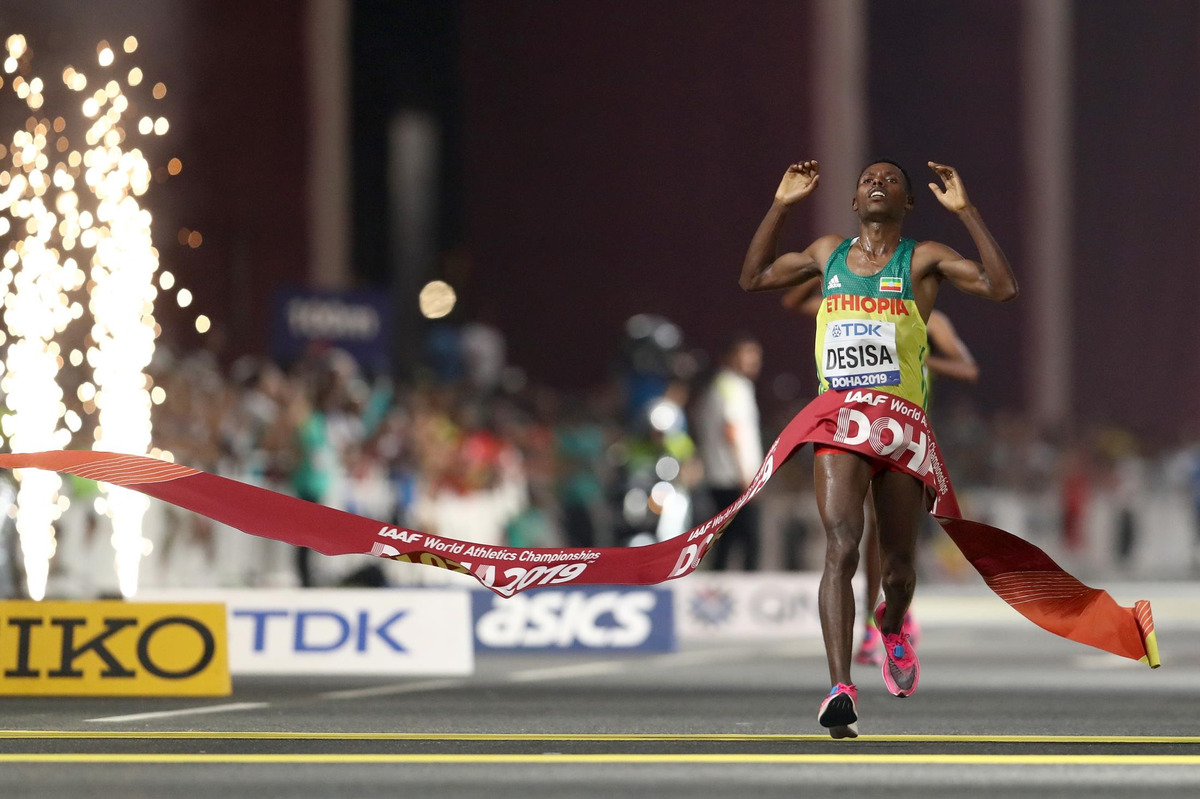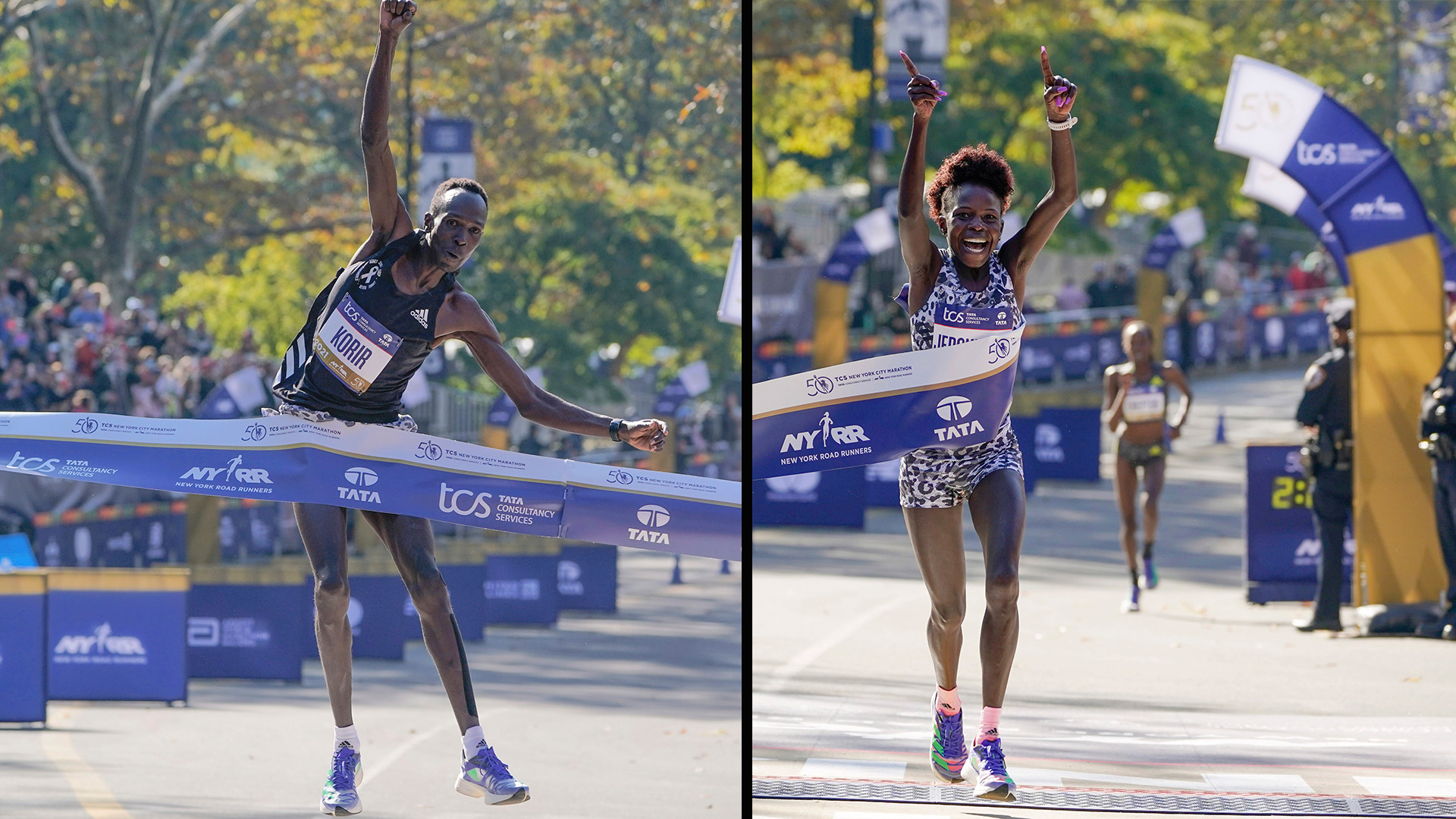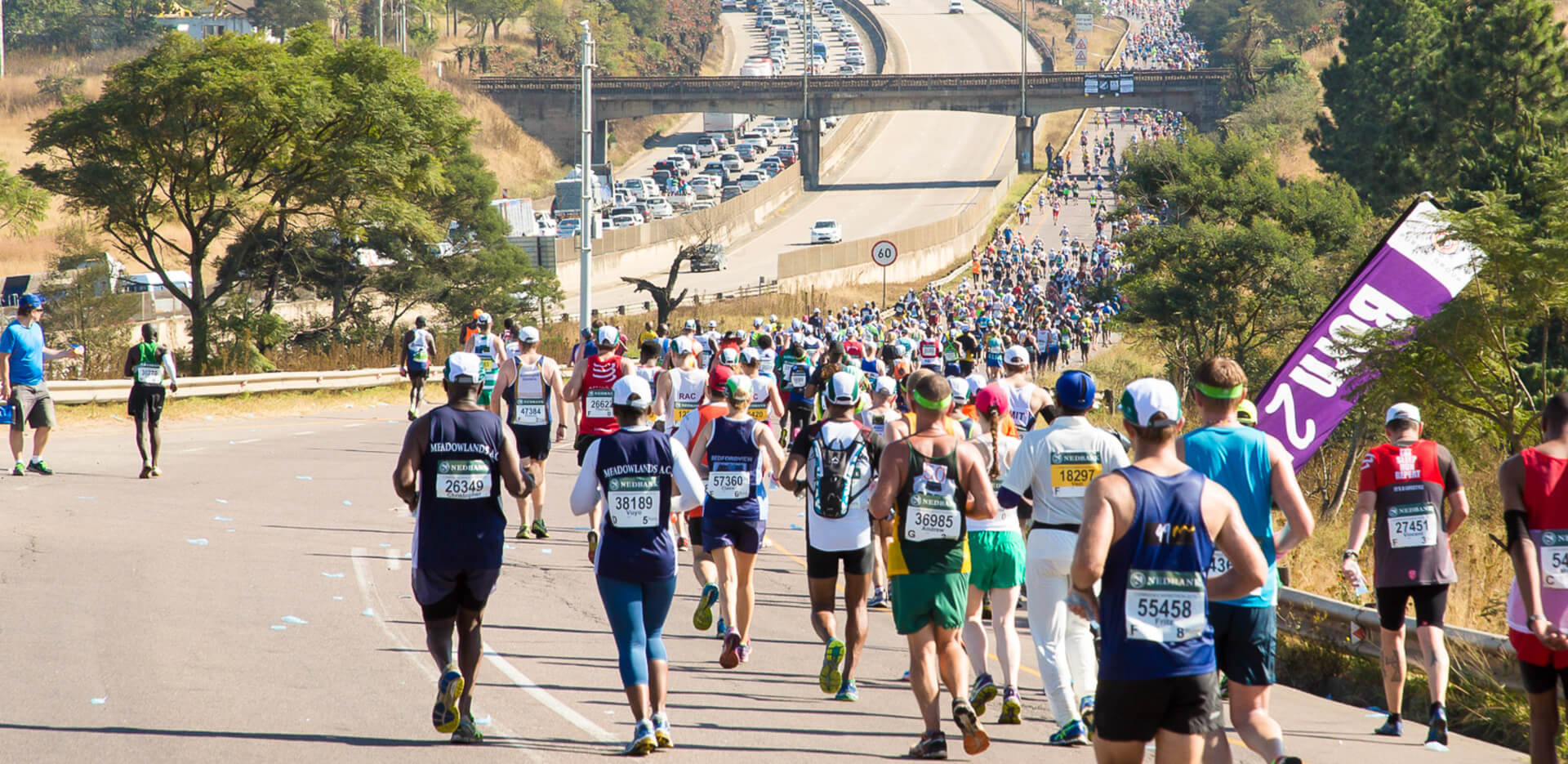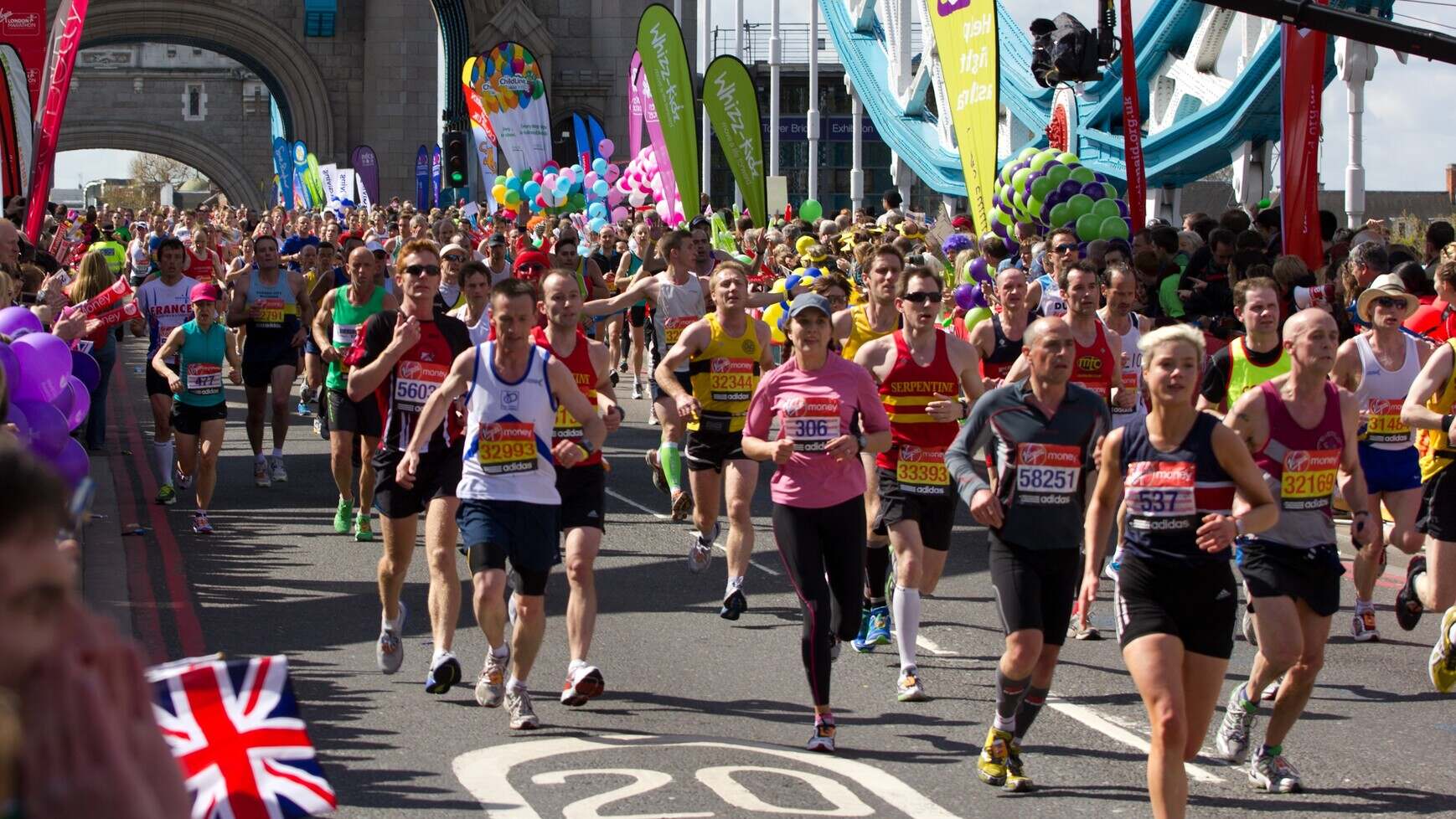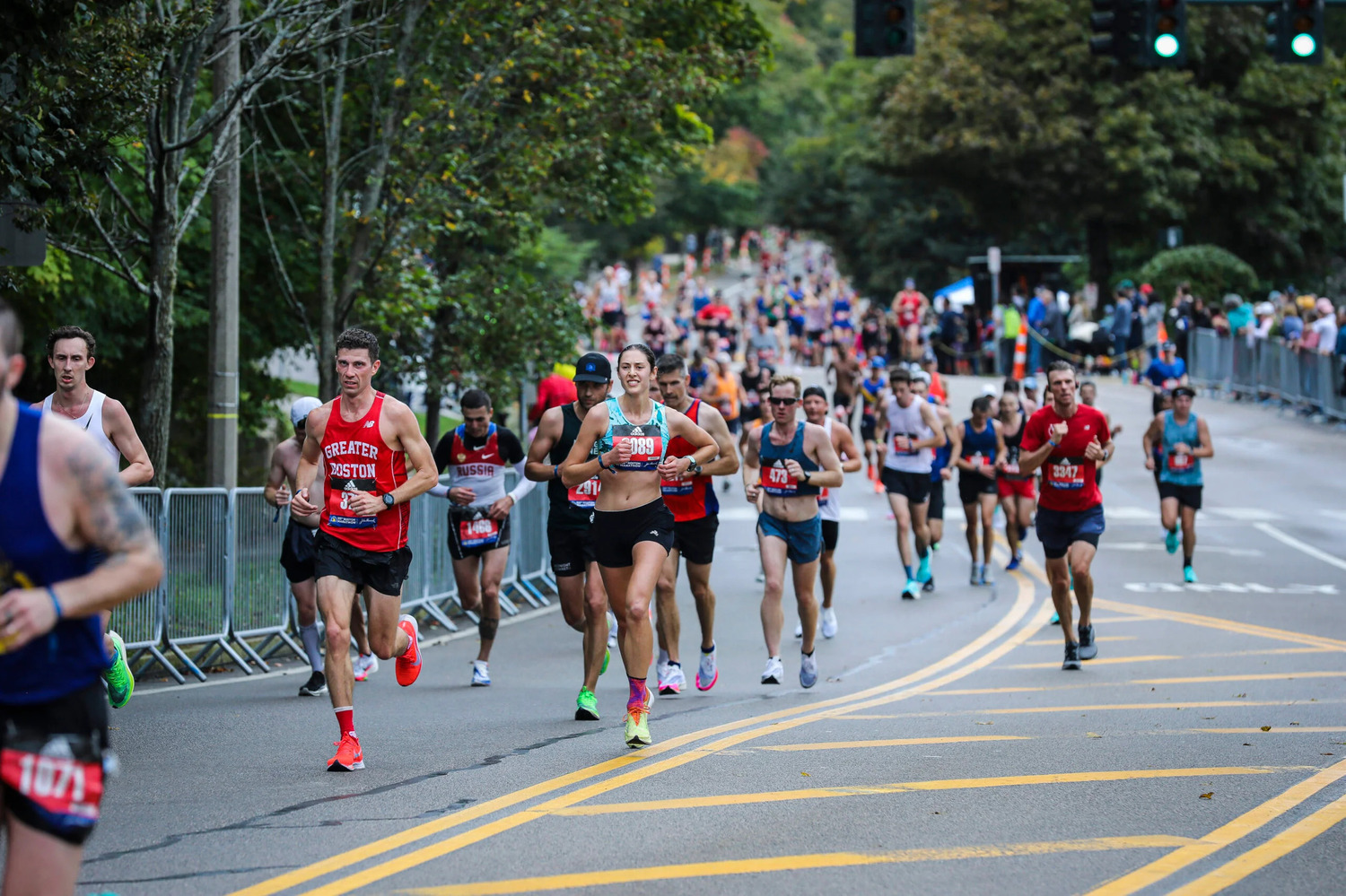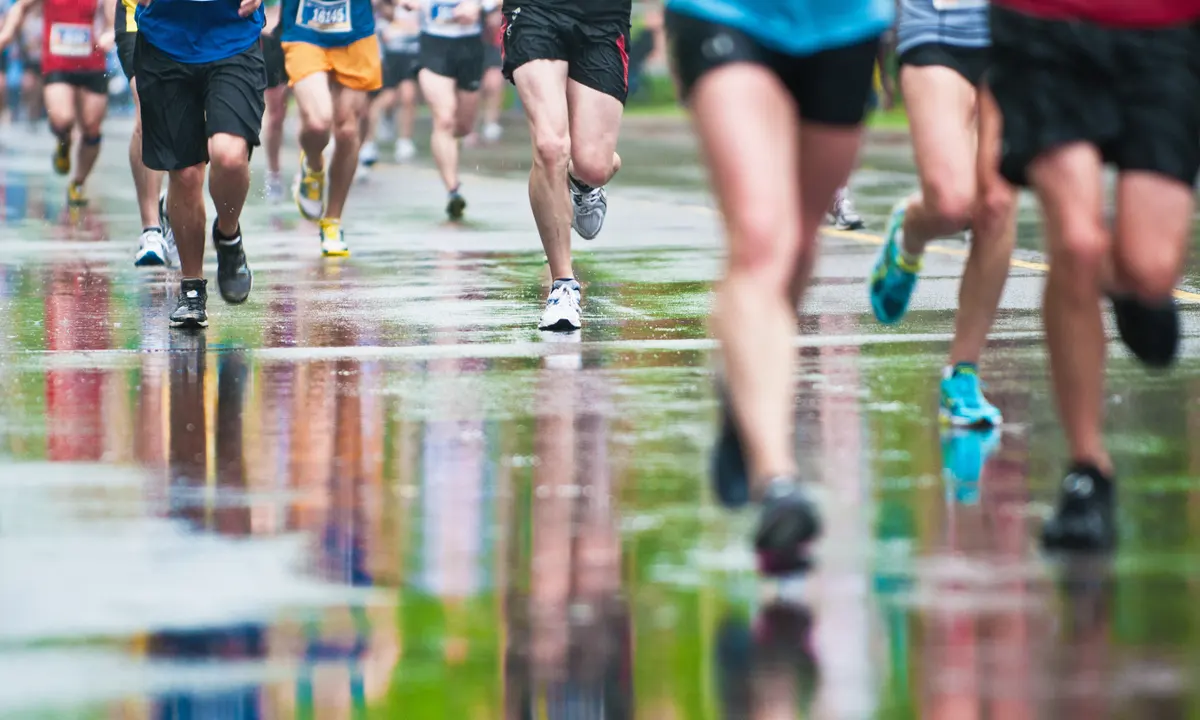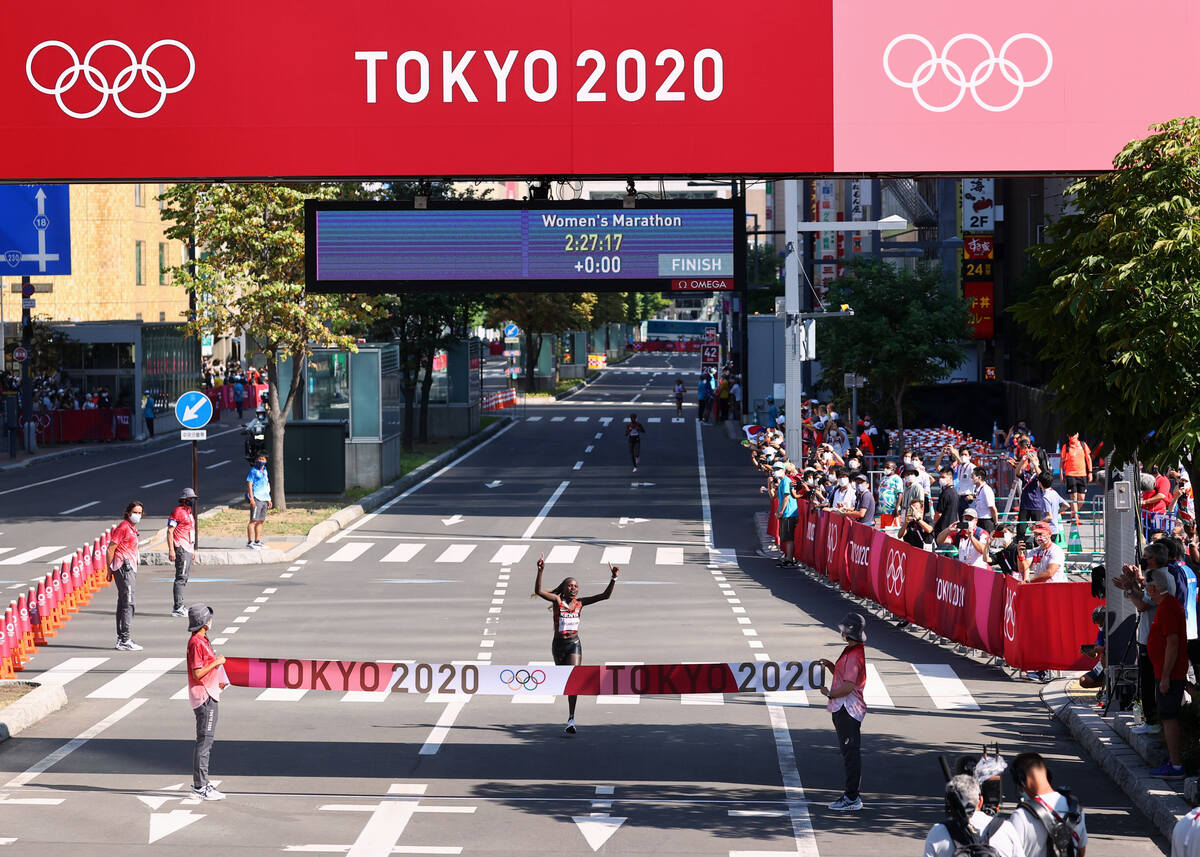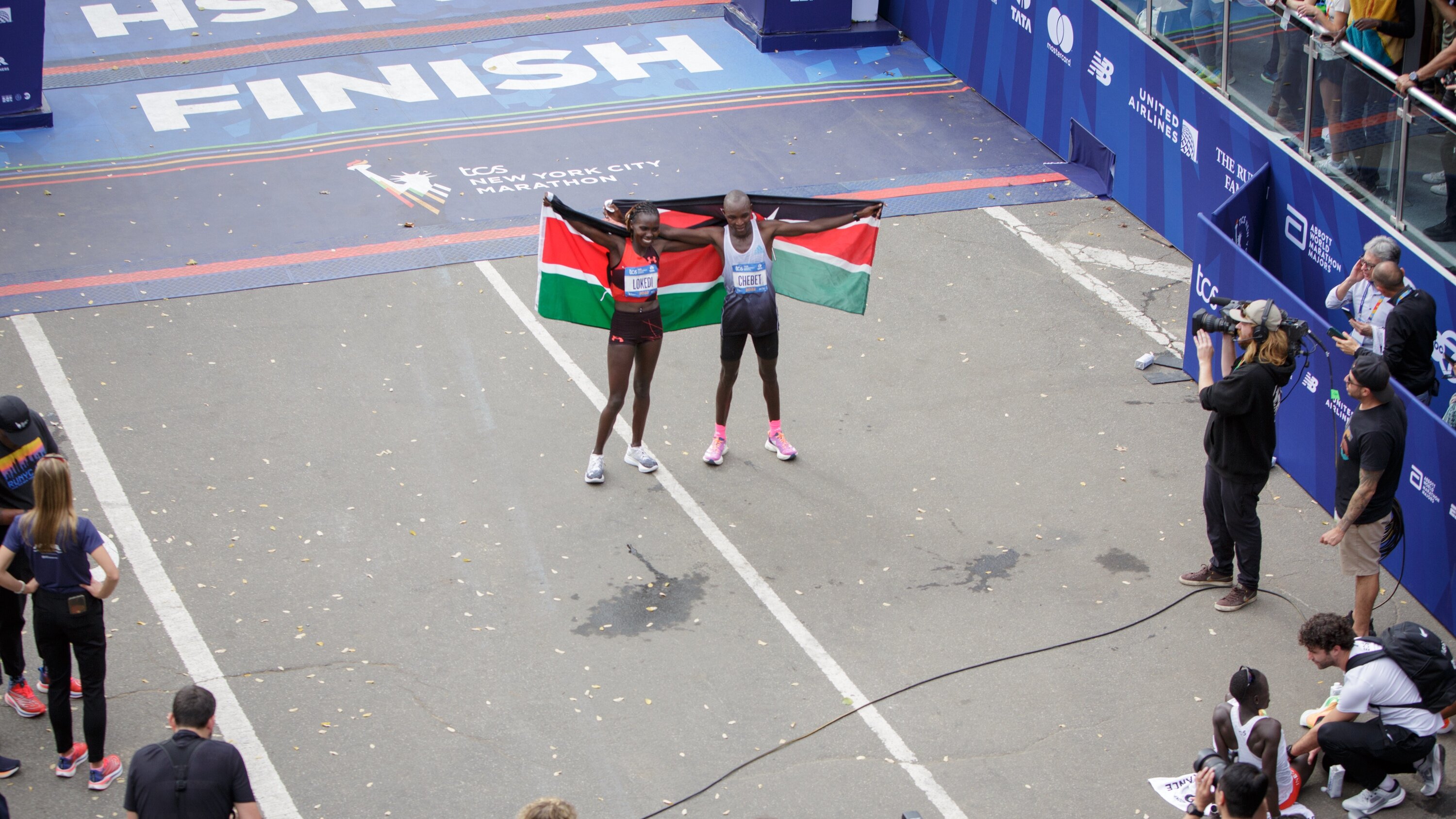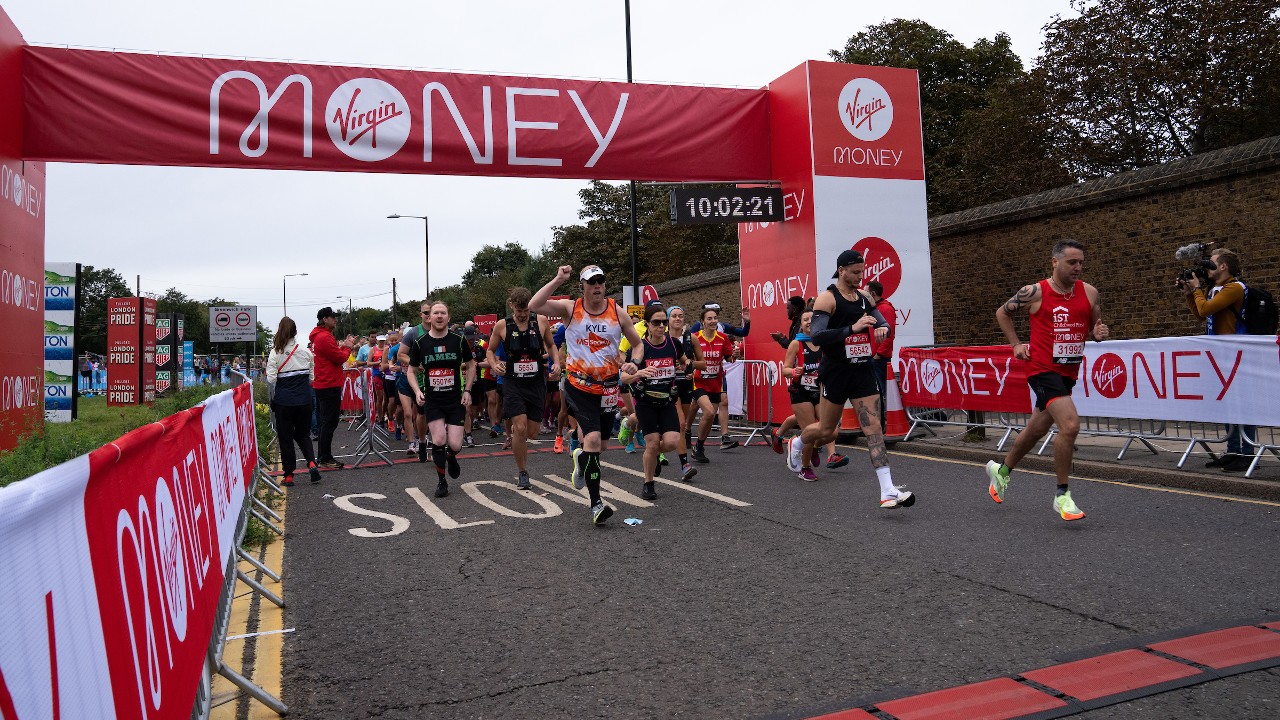

Featured
What Time Does The London Marathon Start
Modified: January 2, 2024
Featured: Find out what time the London Marathon starts and plan your viewing accordingly. Join thousands of runners as they take on the iconic race through the streets of London.
Introduction
The London Marathon is one of the most prestigious and highly-anticipated running events in the world. Held annually in the vibrant capital city of the United Kingdom, this iconic marathon attracts thousands of participants from all walks of life. Whether you’re a seasoned runner or someone looking to take on an incredible personal challenge, the London Marathon offers a unique and unforgettable experience.
Since its inception in 1981, the London Marathon has grown in popularity and has become a symbol of endurance, determination, and the power of the human spirit. It has established its reputation as one of the World Marathon Majors alongside marathons in Tokyo, Boston, Berlin, Chicago, and New York City. Each year, runners from across the globe descend upon London’s bustling streets to test their limits and raise money for various charitable causes.
The London Marathon is renowned for its incredible atmosphere, with millions of spectators lining the route to cheer on the participants. From the iconic landmarks such as Tower Bridge and Buckingham Palace to the diverse neighborhoods and scenic parks, the course showcases the rich history and vibrant culture of London.
In this article, we will delve into the details of the London Marathon, including its history, date and time, start line location, and various start times for different categories of runners. Whether you’re planning to participate in the race or simply curious about this world-famous event, read on to discover everything you need to know about when the London Marathon starts.
History of the London Marathon
The London Marathon has a rich and fascinating history that dates back to 1981. The idea for the race came about when Olympic champion Chris Brasher was inspired by the New York City Marathon and wanted to establish a similar event in London. Brasher, together with athlete and journalist John Disley, approached the Mayor of London, Ken Livingstone, with their vision for a London-based marathon.
On March 29, 1981, the very first London Marathon took place with over 20,000 people participating. The race started in Greenwich and finished at Constitution Hill near Buckingham Palace. It was an instant success, captivating both runners and spectators alike.
Over the years, the London Marathon has grown in popularity and significance. It has become an iconic event, attracting elite athletes, recreational runners, and charity fundraisers from all around the world. The racecourse has evolved to showcase the best of London, taking participants past iconic landmarks such as the Tower Bridge, the Cutty Sark, and the London Eye.
In 2010, the London Marathon made history when it became the first marathon to ever hold its millionth finisher milestone. This achievement cemented the race’s position as one of the most prestigious marathons globally and highlighted its enduring appeal to runners of all abilities.
Furthermore, the London Marathon is known for its philanthropic endeavors. It has raised over £1 billion for various charitable causes since its inception, making it the largest annual fundraising event in the world. Runners have the opportunity to support and represent charities close to their hearts, turning their marathon effort into a force for good.
The London Marathon has also witnessed remarkable athletic achievements over the years. Legendary runners, both male and female, have set course records and broken barriers. In recent years, the race has become renowned for its strong elite field, attracting the world’s top distance runners who compete for podium positions and ambitious personal bests.
As the London Marathon continues to evolve and inspire, it remains an iconic event that encapsulates the spirit of endurance, camaraderie, and the triumph of the human spirit. Each year, it brings together people from all walks of life to celebrate the joy of running and make a positive impact on society.
Date and Time of the London Marathon
The London Marathon is typically held on a Sunday in April, providing participants with ideal running conditions and a festive atmosphere. The exact date varies each year, but it is usually scheduled for either the third or fourth Sunday of the month.
In recent years, the race has taken place in late April, allowing runners to take advantage of the springtime weather. With temperatures ranging from around 8 to 15 degrees Celsius (46 to 59 degrees Fahrenheit), the London Marathon offers a comfortable running climate that is well-suited for long-distance running.
The start time for the London Marathon is typically between 9:00 am and 10:00 am local time. The exact start time can vary slightly depending on logistical factors and the organizers’ schedule. It is crucial for participants to arrive at the start area well in advance to allow for necessary preparations and to avoid any last-minute delays.
The race organizers implement a wave start system to manage the large number of participants. This system allows runners to start in smaller groups at different times, ensuring a smoother flow and reducing congestion along the course. Wave starts are assigned based on each runner’s predicted finish time. The faster runners start in the earlier waves, while slower participants start in the later waves.
The time limit for completing the London Marathon is typically set at 8 hours. This generous time frame allows runners of all abilities to participate and complete the race at their own pace. It is important to note that streets along the racecourse are reopened to traffic gradually as the time limit approaches, so participants must aim to finish within this time limit to secure an official race finish.
In addition to the main marathon event, there are also separate start times for wheelchair and handcycle participants. These divisions typically start before the main race to ensure a clear course for the athletes and to highlight their extraordinary abilities. The wheelchair and handcycle races attract top athletes who compete for records and showcase the incredible athleticism of these athletes.
Overall, the date and time of the London Marathon are carefully planned to provide participants with optimal running conditions and a memorable race experience. From the lively crowds that line the route to the iconic landmarks that serve as a backdrop, the London Marathon is a unique event that runners and spectators look forward to year after year.
Start Line Location
The start line of the London Marathon is a highly anticipated and iconic location that sets the stage for the thrilling race ahead. Over the years, the start line has been located in different areas of London, each offering its own unique charm and atmosphere.
In recent years, the start line for the London Marathon has been situated in the Greenwich Park. This beautiful park, located in southeast London, provides a picturesque backdrop for the beginning of the race. Runners gather in the park’s spacious surroundings, energized and ready to embark on their marathon journey.
Greenwich Park offers a stunning view of the London skyline, with notable landmarks such as the Cutty Sark and the O2 Arena visible from the start line. This adds to the excitement and sense of occasion, as runners take in the sight of the city before them, knowing they will soon be traversing its streets.
The choice of Greenwich Park as the start line location is strategic, as it allows for a smooth and organized start. The expansive park area provides ample space for runners to gather, warm up, and acclimate themselves to the atmosphere of the event. It also allows for the implementation of the wave start system, ensuring a controlled and efficient beginning to the race.
Additionally, having the start line in Greenwich Park allows the course to weave through some of London’s most iconic landmarks and neighborhoods. Runners pass historic sites such as the Tower of London, Buckingham Palace, and the Houses of Parliament, creating a truly memorable and immersive experience.
The start line location also contributes to the vibrant and festive atmosphere of the London Marathon. Spectators gather around Greenwich Park to cheer on the participants, creating an electric energy that propels the runners forward. The support and encouragement from the crowd at the start line are crucial in boosting the spirits of the runners and setting a positive tone for the race.
Overall, the start line location for the London Marathon plays a significant role in shaping the race experience. From the awe-inspiring view of the London skyline to the buzzing energy of the crowd, the start line sets the tone for the incredible journey that lies ahead for the thousands of participants taking on the challenge of the London Marathon.
Wave Starts
The London Marathon utilizes a wave start system to ensure a smooth and efficient beginning to the race. This system divides the participants into smaller groups, or waves, based on their predicted finish times. The wave start system is designed to reduce congestion along the course and provide a better overall race experience for all participants.
The wave start process begins before the official start time of the race. Participants are assigned a specific wave and corresponding start time, which is communicated to them prior to race day. It is important for runners to carefully follow the instructions provided and be aware of their assigned wave and start time to ensure they are in their designated area at the appropriate time.
Typically, the fastest runners start in the first wave, with subsequent waves following at designated intervals. The staggered start times allow for smoother movement along the course, preventing bottlenecks and allowing each participant to establish their own rhythm early on in the race.
The wave start system also helps to ensure a fair competition for all participants. Runners of similar abilities are grouped together, allowing them to compete against individuals who are in a similar pace range. This not only creates a more competitive environment but also encourages camaraderie and support among participants who are navigating the marathon course together.
Within each wave, runners are typically organized in designated starting pens. These pens further help to manage the flow of participants and ensure a controlled start to the race. Runners are directed to their assigned starting pen based on their wave and bib number, which is assigned by the race organizers.
It’s crucial for participants to follow the instructions and guidelines provided by the race organizers when it comes to wave starts. Arriving at the start line area well in advance is key to allow time for necessary preparations and to ensure a smooth start to the race. It’s also important for runners to be respectful of their assigned wave start times and avoid trying to start in a different wave or starting pen, as this can disrupt the overall flow of the race.
The wave start system has proven to be successful in managing the large number of participants in the London Marathon. It not only helps to alleviate congestion along the course but also contributes to a more enjoyable and fair race experience for all participants. By implementing wave starts, the London Marathon organizers ensure that every runner has the best opportunity to achieve their personal goals while being part of one of the most iconic marathons in the world.
Elite Runners Start Time
The London Marathon showcases some of the world’s top elite athletes as they compete for podium positions and chase personal bests. To give these exceptional runners the best possible race conditions, they start separately from the mass start, ensuring a clear and unobstructed course.
The elite runners’ start time is typically a few minutes before the mass start, allowing them to establish a strong pace and forge ahead in pursuit of their goals. The exact start time for elite runners varies from year to year but is generally positioned to optimize their performance and enable them to set fast times.
Elite runners often have dedicated starting areas, separate from the rest of the participants. These starting areas are strategically positioned at the front of the race, allowing them to quickly access the open road and avoid any congestion. The clear course ahead provides them with the best opportunity to showcase their exceptional talent and compete against their fellow elite athletes.
The elite start time also allows for enhanced television coverage. With a separate start, the cameras can focus on the elite runners, capturing their every move and providing in-depth coverage of their race. This not only provides viewers with an exciting spectacle but also highlights the incredible athleticism and dedication of these elite athletes.
Spectators lining the race route eagerly await the arrival of the elite runners. Their presence creates a sense of excitement and anticipation, adding to the overall atmosphere and drawing even more spectators to cheer on the participants. The sight of these world-class athletes zooming past ignites inspiration and admiration among both the crowd and fellow runners.
While the elite runners may start earlier than the mass start, their achievements continue to resonate throughout the entire marathon. Their performances set the standard for excellence and inspire participants of all abilities to push their limits and strive for their personal bests. They serve as a reminder of the immense potential that lies within every runner, regardless of their level of experience or speed.
Overall, the elite runners’ start time in the London Marathon acknowledges their extraordinary talent and provides them with the ideal conditions to showcase their skills. By separating them from the mass start, organizers ensure that these exceptional athletes have the best opportunity to achieve their goals and inspire others with their remarkable performances.
Mass Start Time
The mass start time of the London Marathon is the eagerly anticipated moment when thousands of participants from all walks of life come together to take on the incredible challenge of completing 26.2 miles. It is a celebration of personal triumphs, community spirit, and the power of collective determination. The mass start time is typically a few minutes after the elite runners begin their race, ensuring a smooth flow and an unforgettable experience for all participants.
The exact mass start time may vary slightly from year to year due to logistical considerations, but it is usually scheduled to take place shortly after the elite runners have begun. This allows enough time for the elite athletes to establish their pace and distance themselves from the main pack of runners before the mass start.
The mass start time is a moment of great excitement and anticipation. Runners gather at their designated starting pens, filled with a mix of nerves and adrenaline. The atmosphere is electric, as participants exchange stories, offer words of encouragement, and prepare themselves mentally for the journey ahead.
As the starting gun goes off, a wave of runners sets off into the streets of London, united by a shared goal of completing the marathon. The mass start creates a sea of colors, as runners of all abilities come together to tackle the iconic racecourse.
The mass start time is carefully organized to ensure a smooth flow of participants along the course. To avoid overcrowding and potential bottlenecks, runners are assigned starting pens based on their predicted finish times. This helps to ensure a more even distribution of runners and a better overall running experience for all participants.
The mass start showcases the diversity and inclusivity of the London Marathon. Participants from all backgrounds, ages, and abilities come together, each with their own story and motivation. There is a sense of camaraderie as runners encourage one another, helping to create a supportive and uplifting atmosphere throughout the race.
Spectators line the streets, cheering on the mass of runners as they pass by. Their support and cheers serve as a motivating force, providing an extra surge of energy and enthusiasm to the runners. It is this collective encouragement that makes the mass start of the London Marathon a truly memorable and inspiring experience.
The mass start time is a celebration of personal achievement and the power of the human spirit. It is a reminder that the London Marathon is not just a race, but a journey of self-discovery, resilience, and determination. Participants push past their limits, drawing strength from the energy of the crowd and the support of their fellow runners. It is this shared experience that makes the mass start of the London Marathon a magical moment that will be etched in the memories of participants for years to come.
Wheelchair and Handcycle Start Time
The London Marathon is not just an event for runners on foot; it also includes races for wheelchair participants and those using handcycles. These divisions have their own designated start time, which allows them to showcase their incredible abilities and compete on a level playing field.
The start time for wheelchair and handcycle participants typically precedes the mass start of the marathon. This ensures that the course is clear and enables these athletes to navigate the racecourse with ease and efficiency. The exact start time varies each year, but it is carefully scheduled to provide the wheelchair racers and handcyclists with optimal racing conditions.
The separate start time for wheelchair and handcycle participants allows them to compete without the congestion that can occur during the mass start. It gives these athletes the space and freedom to maneuver, allowing for a more streamlined race experience. This ensures that they have the best opportunity to showcase their speed, skill, and strength as they take on the challenging marathon course.
The wheelchair and handcycle start time also creates a special moment of recognition and celebration for these athletes. Spectators gather to cheer on these incredible racers as they begin their journey. The sight of these determined athletes propelling themselves forward with remarkable precision and power is truly inspiring and adds to the overall energy and excitement of the event.
Wheelchair and handcycle participants in the London Marathon compete not only against one another but also against the clock. Their start time allows them to focus on achieving personal bests and potentially breaking records. The clear course ahead and the support of the enthusiastic spectators provide an optimal environment for these athletes to push their limits and achieve remarkable feats.
It’s important to note that the wheelchair and handcycle start time is tailored to accommodate both the elite athletes in these divisions and the recreational participants. This ensures that all wheelchair and handcycle participants have the opportunity to showcase their skills and compete at their own pace while enjoying the unique experience of being a part of the London Marathon.
The wheelchair and handcycle start time signifies the inclusivity and diversity of the London Marathon. It embraces the strength, determination, and resilience of athletes with disabilities, demonstrating that physical limitations do not hinder their pursuit of excellence. The separate start time for wheelchair and handcycle participants is a tribute to their extraordinary abilities and an acknowledgment of their important role in the marathon.
The start time for wheelchair and handcycle participants is a captivating moment that sets the stage for incredible displays of athleticism, perseverance, and courage. It is a testament to the London Marathon’s commitment to inclusivity and the celebration of the human spirit. The efforts of these athletes inspire and uplift all those who witness their remarkable achievements along the marathon course.
Conclusion
The London Marathon is more than just a race; it is a global phenomenon that captures the hearts and imaginations of participants and spectators alike. From its storied history to its prestigious elite runners, from the mass start of thousands of participants to the awe-inspiring wheelchair and handcycle races, the London Marathon is a celebration of determination, community, and the power of the human spirit.
The date and time of the London Marathon are carefully chosen to provide ideal running conditions and a festive atmosphere. Runners from across the world gather on a Sunday in April, ready to conquer the 26.2-mile race through the streets of London. The mass start and the waves of runners create a vibrant energy, with spectators lining the route to cheer on and support the participants.
The race starts in Greenwich Park, offering a picturesque backdrop of the London skyline. Elite runners, wheelchair racers, and handcycle participants have their separate start times, allowing them to showcase their incredible abilities and set records. The wave start system ensures a smooth flow of participants along the course, avoiding congestion and providing a fair competition for all runners.
As the miles are conquered and the finish line approaches, the London Marathon becomes a test of endurance, resilience, and personal achievement. The iconic landmarks of London serve as a backdrop to the runners’ monumental journey, creating lifelong memories and a connection to the city’s rich history and culture.
The London Marathon is about much more than just completing 26.2 miles; it is an opportunity for participants to make a positive impact on charitable causes. With over £1 billion raised for various charities, the event embodies the spirit of giving back and making a difference in the lives of others.
In conclusion, the London Marathon is a testament to the power of the human spirit and the incredible achievements that can be accomplished through determination and perseverance. It brings together people from all walks of life, united by their love for running and their desire to push their limits. Whether you are an elite athlete, a recreational runner, or a spectator cheering from the sidelines, the London Marathon offers a truly unforgettable experience that celebrates the indomitable human spirit and the joy of challenging oneself.
